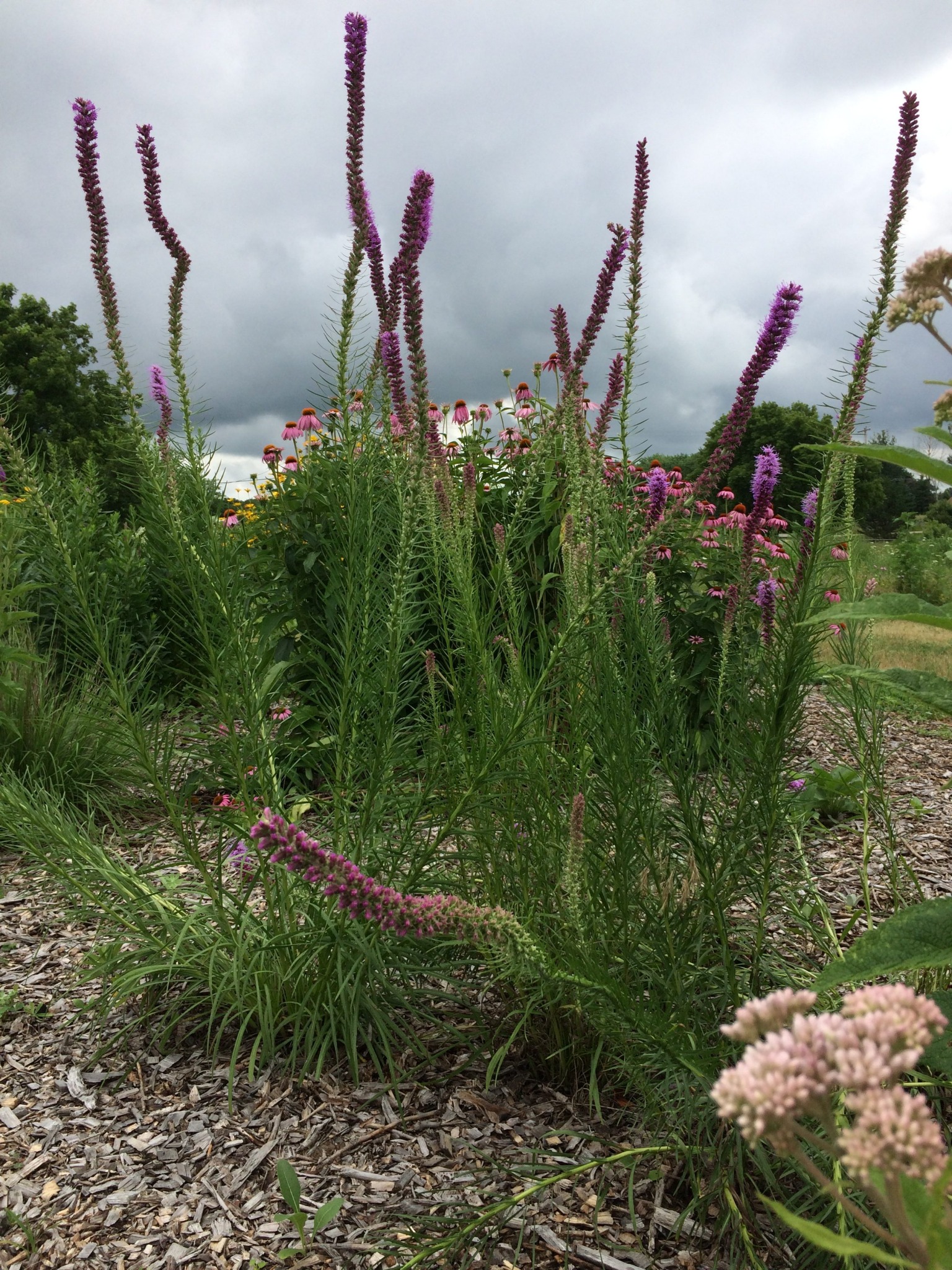Description
OUT OF STOCK
Tall, erect, purplish- pink spike in August-September
Tall, erect, purplish- pink spike in August-September
OUT OF STOCK
Tall, erect, purplish- pink spike in August-September
OUT OF STOCK
Its delicate appearance conceals its hardy constitution. Dainty bluish-lilac bells to 12” stems on bushy round ground-hugging foliage. Blooms from June to October and occasionally November. Perfect for rock gardens and borders.
Size: 9-12" x 12"
Care: Sun to part shade in moist well-drained soil
Native: Europe, Siberia and North America, including Wisconsin
Wildlife Value: Walnut and deer tolerant
Lakota ate the leaves raw and cooked and made an infusion of the roots to remedy earaches. Sir Walter Scott immortalized the Bluebell of Scotland in Lady of the Lake. Also a subject of Emily Dickinson’s poetry.
OUT OF STOCK
June thru fall bears 6” long spikes looking like bottle brushes.
Size: 2-3’ x 12-18”
Care: sun to part shade in dry to moist well-drained soil - tolerates dry shade
Native: Nova Scotia S to Virginia, W to ND and OK. Wisconsin native
Wildlife Value: Birds eat seeds
Hystrix from the Greek (‘hedgehog’) meaning “with spikes” or “bristly” describing the flowers and patula means “spreading.” Collected before 1794. In 1913 L H Bailey wrote, “sometimes used for lawn decoration and for borders.”
Fragrant medium pink umbels, like an upside down ballerina’s skirt, July – September. One of internationally known garden designer Piet Oudolf’s 100 “MUST HAVE” plants, Gardens Illustrated 94 (2013)
Size: 3’-4’ x 2-3’
Care: Sun in moist to moist well-drained soil
Native: North America – all states except those along the Pacific Coast – Wisconsin native.
Wildlife Value: host for Monarch caterpillars, flowers are source of nectar for several butterflies
Named after Asclepias, a Greek god of medicine. Native American groups used Swamp milkweed – Chippewa to increase their strength & the stems made into twine; Iroquois to heal navels in babies, to increase or decrease urine and to make a person strong enough to punish witches; Meskwaki to drive out tapeworms; and Menominee used it as an ingredient in food – added to deer soup & cornmeal mush. Oneida used the root to remedy asthma and whooping cough. They made thread to sew moccasins with the stems. Lakota Sioux: “The pulverized root is made into a salve which is used to treat swollen glands. The young seed pods are edible after cooking. An infusion of the roots is used to treat asthma, rheumatism, syphilis, and a weak heart.” Listed as growing in England in Philip Miller’s Gardeners’ Dictionary, 1768. Grown at America’s 1st botanic garden, Elgin Botanic Garden 1811. Pressed specimen in Emily Dickinson’s herbarium. “The downy parachutes . . . attached to each seed are six times more buoyant than cork and five times warmer than wool. Large quantities of milkweed were grown for use as stuffing in pillows and lifejackets during World War II.” USDA Natural Resources Conservation Service.
Cheerful yellow daisies all summer, non-stop.
Size: 2-3' x 2'
Care: Full sun well-drained to moist well-drained soil, drought tolerant
Native: Eastern Europe
This promiscuous flower sports maize colored daisies with ferny, aromatic foliage. The name Anthemis evolved from anthemon meaning “free flowering,” which describes the plant’s carefree, June through fall, blossoms. Philip Miller illustrated Marguerite in his 1750’s Dictionary. The flower was used to dye wool and to make tea.

